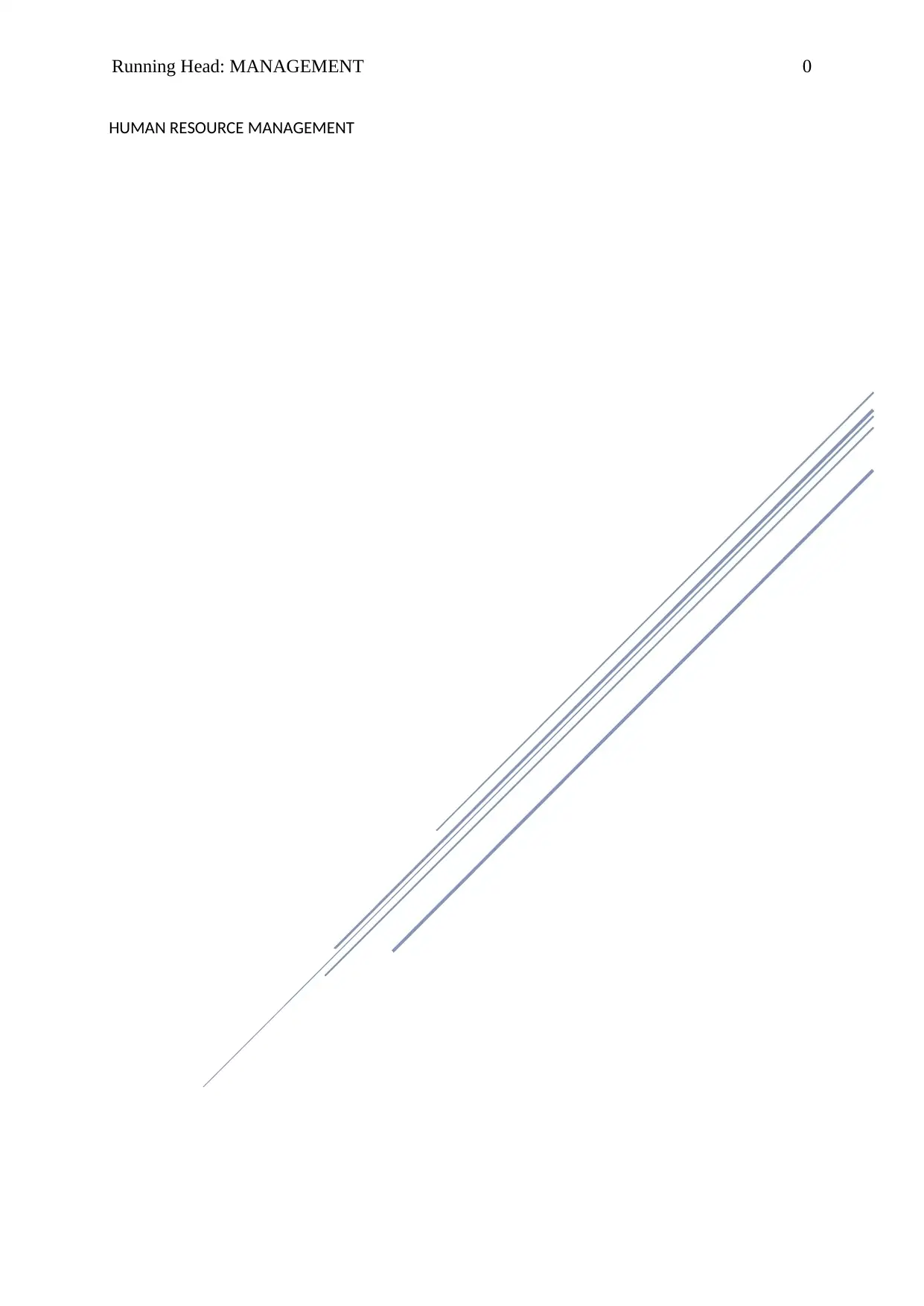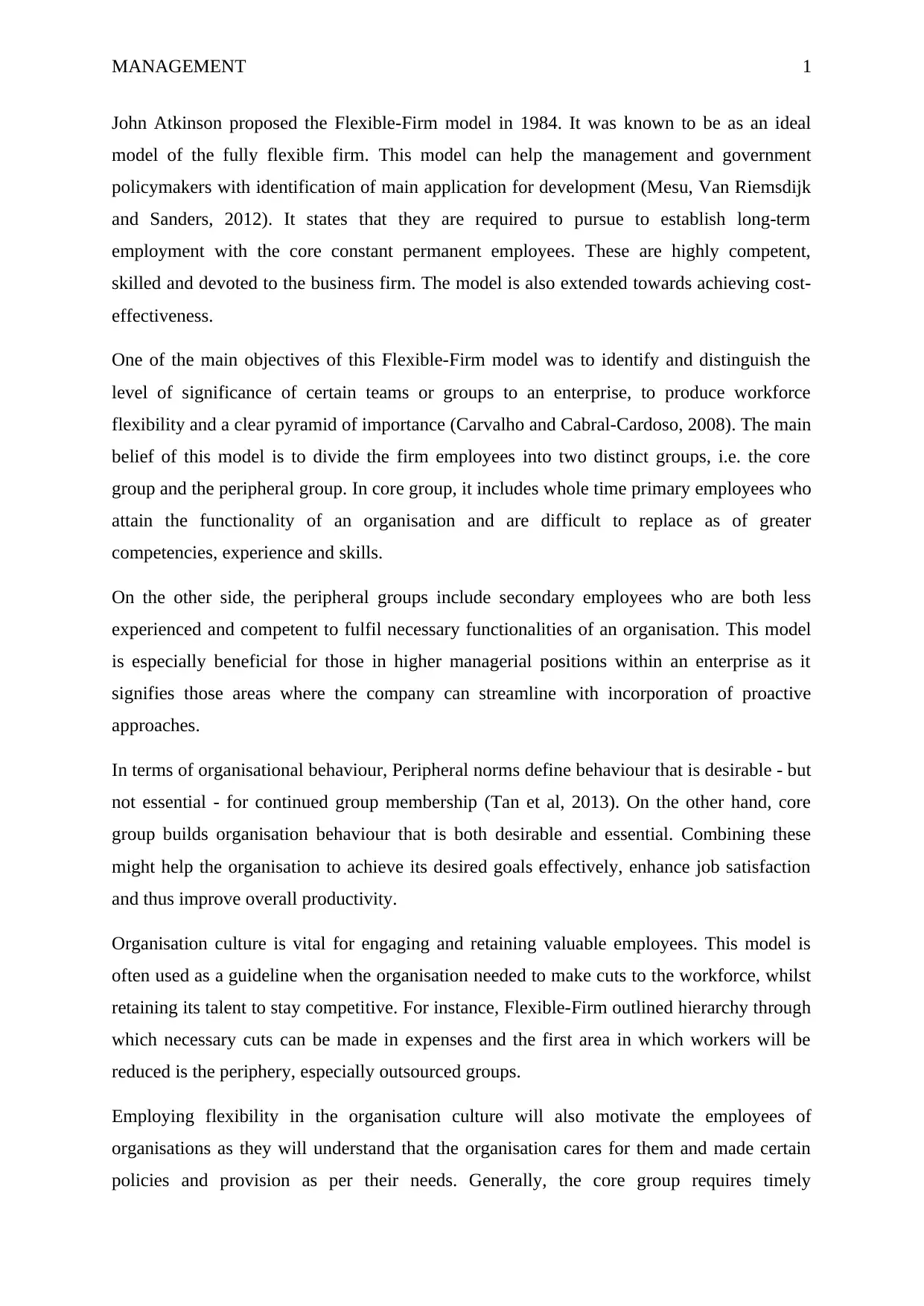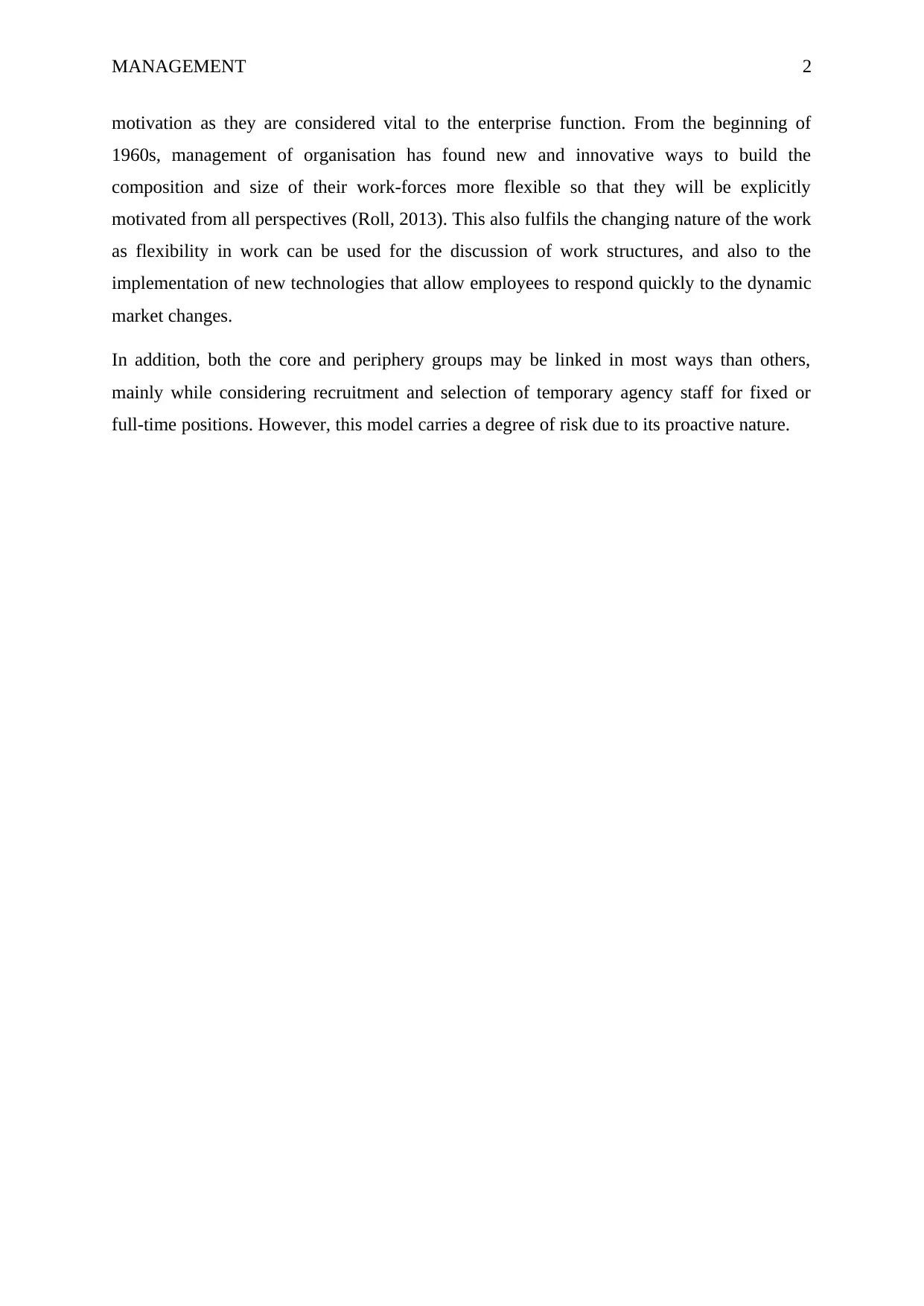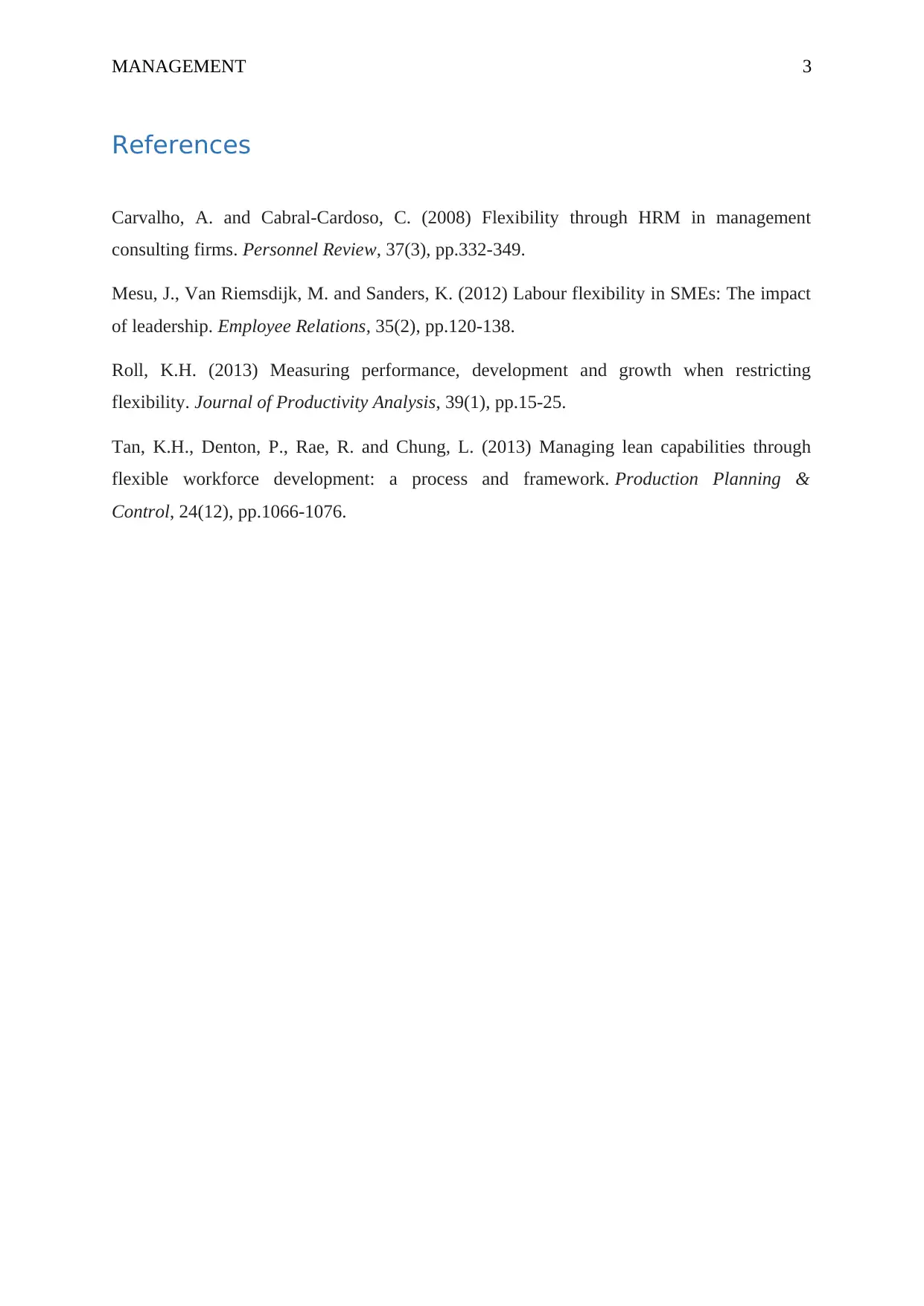Management Report: Analyzing John Atkinson's Flexible-Firm Model
VerifiedAdded on 2023/04/19
|4
|727
|316
Report
AI Summary
This report analyzes John Atkinson's Flexible-Firm Model, introduced in 1984, which provides a framework for understanding workforce flexibility. The model divides employees into core and peripheral groups, with the core group comprising permanent, highly skilled employees essential for the organization's functionality, and the peripheral group including less experienced, temporary staff. The report explores how this model can help management achieve cost-effectiveness, streamline operations, and foster organizational behavior by defining desirable behaviors for each group. It also highlights the importance of organizational culture in engaging and retaining employees, especially during workforce reductions. The analysis further discusses how flexibility in work structures and the implementation of new technologies impact both core and peripheral groups. The report includes references to academic literature supporting the concepts discussed.
1 out of 4











![[object Object]](/_next/static/media/star-bottom.7253800d.svg)